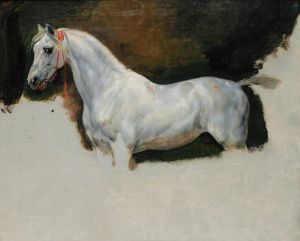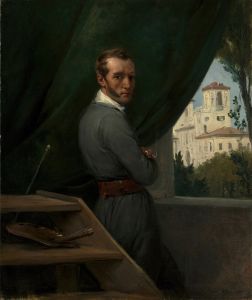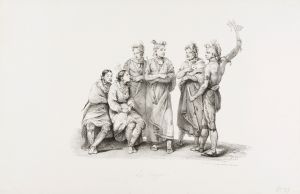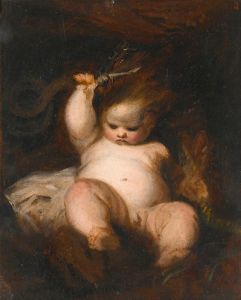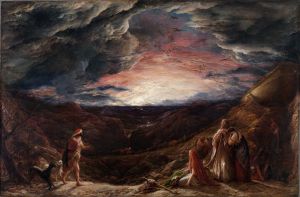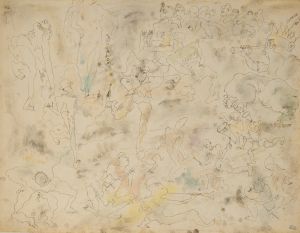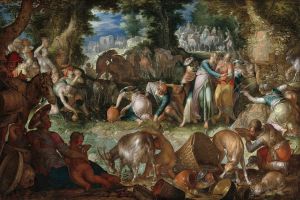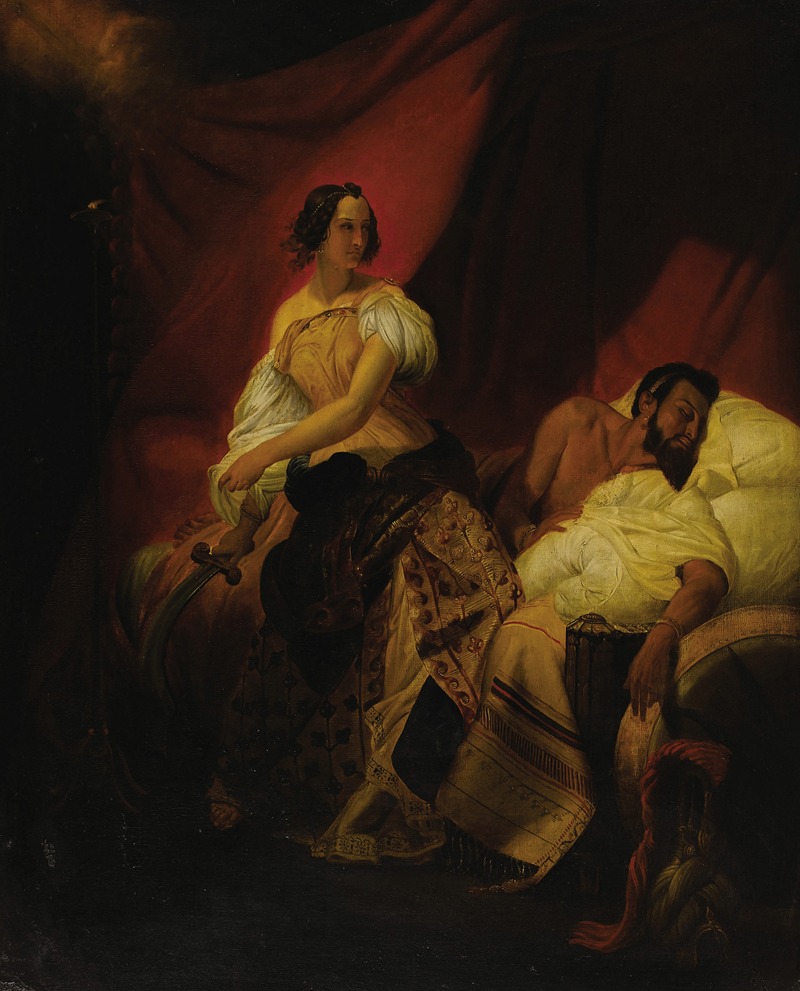
Judith & Holifer
A hand-painted replica of Horace Vernet’s masterpiece Judith & Holifer, meticulously crafted by professional artists to capture the true essence of the original. Each piece is created with museum-quality canvas and rare mineral pigments, carefully painted by experienced artists with delicate brushstrokes and rich, layered colors to perfectly recreate the texture of the original artwork. Unlike machine-printed reproductions, this hand-painted version brings the painting to life, infused with the artist’s emotions and skill in every stroke. Whether for personal collection or home decoration, it instantly elevates the artistic atmosphere of any space.
Horace Vernet's painting Judith and Holofernes is a depiction of the biblical story from the Book of Judith, a deuterocanonical text in the Christian Old Testament. The narrative centers on Judith, a Jewish widow who saves her people by assassinating Holofernes, an Assyrian general threatening to destroy her city of Bethulia. This dramatic and often retold story has been a popular subject in art history, inspiring numerous works by artists across centuries.
Horace Vernet (1789–1863), a French painter known for his historical and military scenes, created his interpretation of this iconic moment. Vernet was part of a prominent artistic family and gained recognition for his ability to depict dynamic and emotionally charged scenes. His version of Judith and Holofernes reflects his skill in capturing dramatic tension and his interest in historical and biblical themes.
The painting portrays the climactic moment when Judith beheads Holofernes in his tent. Vernet's composition emphasizes the intensity of the act, with Judith depicted as a determined and resolute figure. The use of light and shadow in the painting heightens the drama, focusing the viewer's attention on the central action. The details of the setting and the characters' expressions contribute to the emotional impact of the scene.
While Vernet's Judith and Holofernes is not as widely known as other interpretations of the story, such as those by Caravaggio or Artemisia Gentileschi, it remains a significant example of 19th-century French biblical art. The painting demonstrates Vernet's ability to blend historical storytelling with a vivid and theatrical style.
The exact date of the painting's creation and its current location are not widely documented in available sources. However, Vernet's broader body of work, including this piece, reflects his engagement with themes of heroism, sacrifice, and moral conflict, which were popular in the Romantic era.
No further specific details about this painting, such as its provenance or exhibition history, are readily available.








